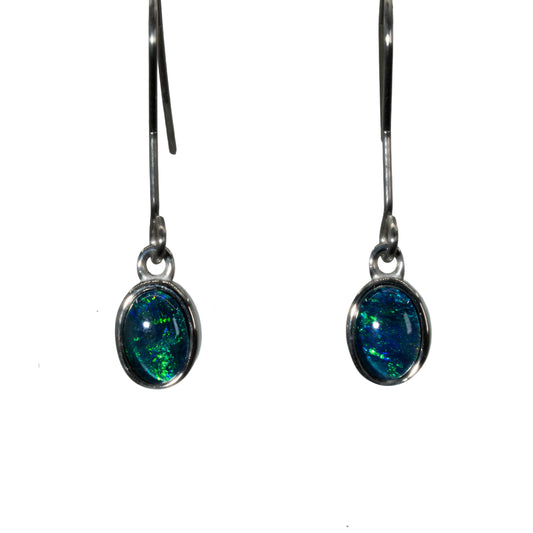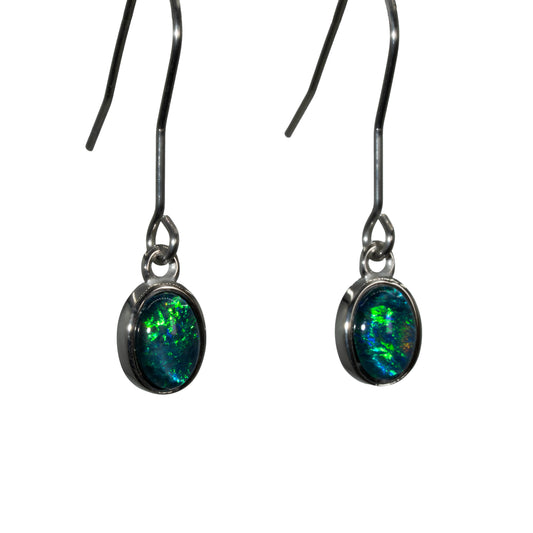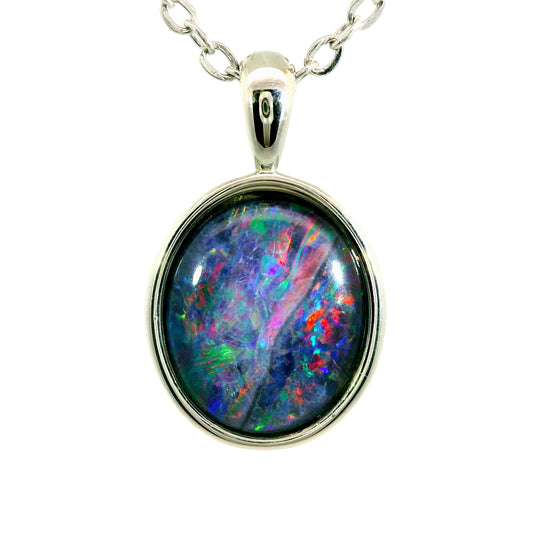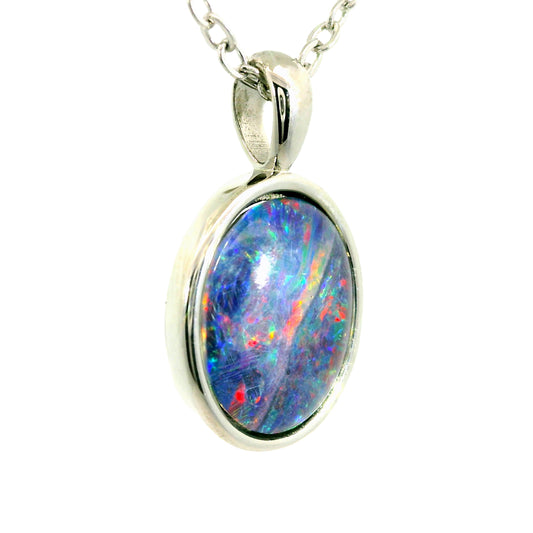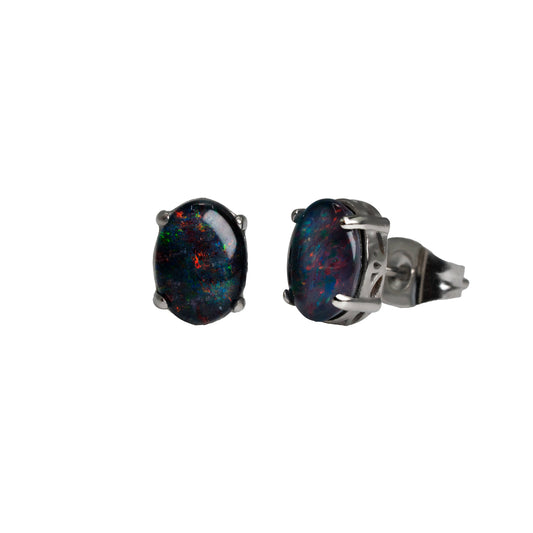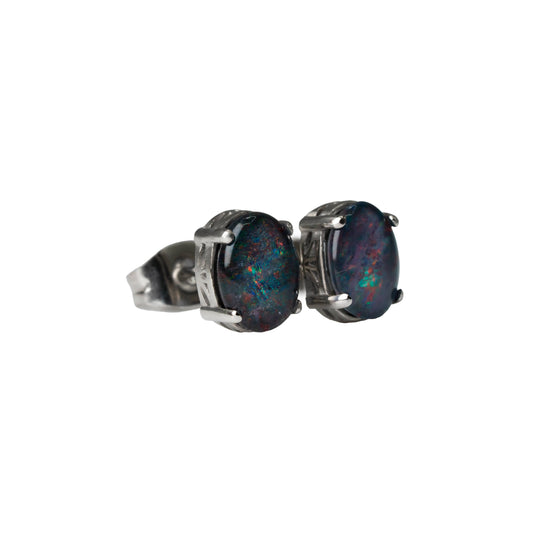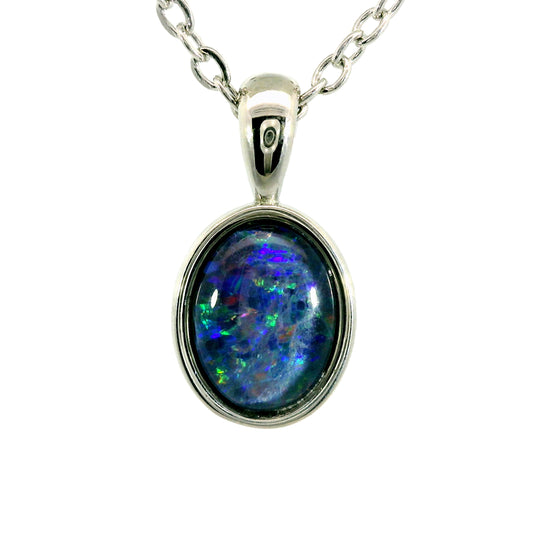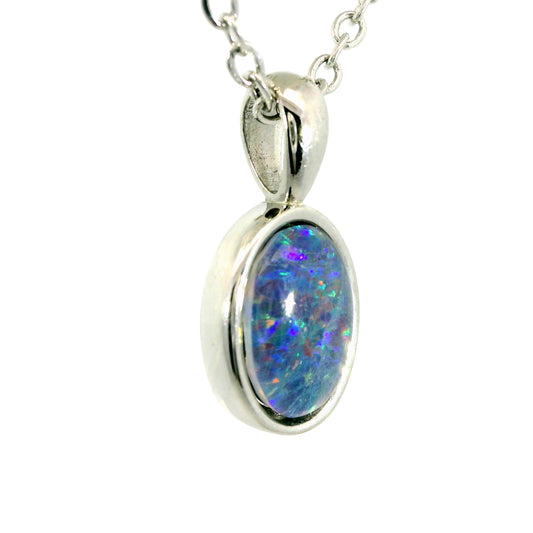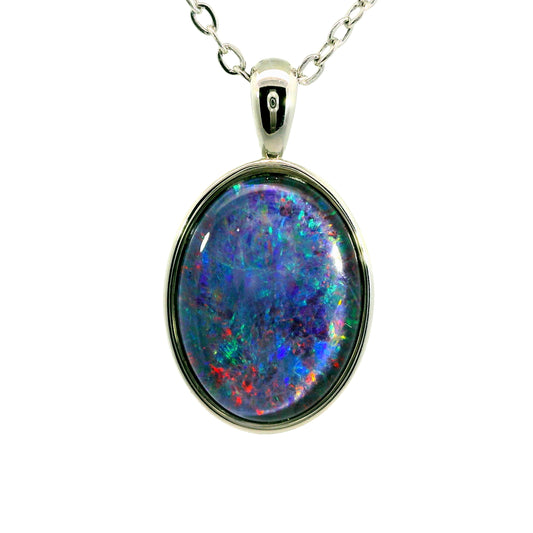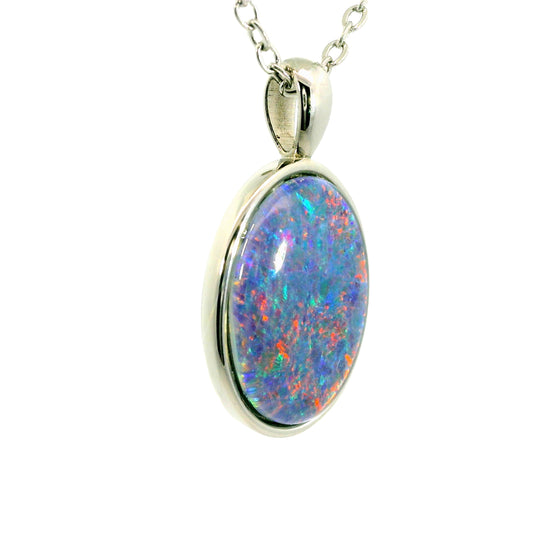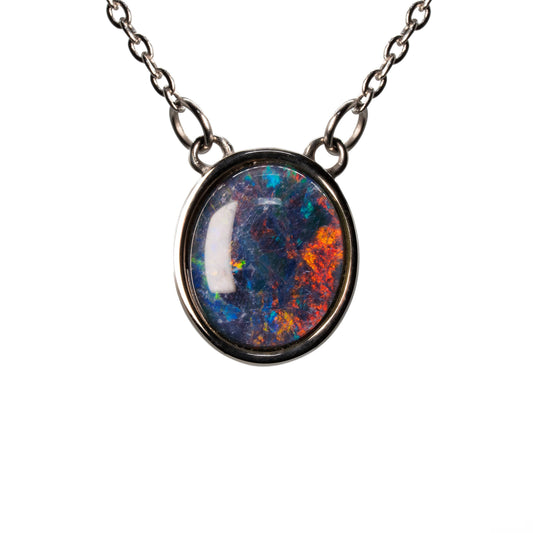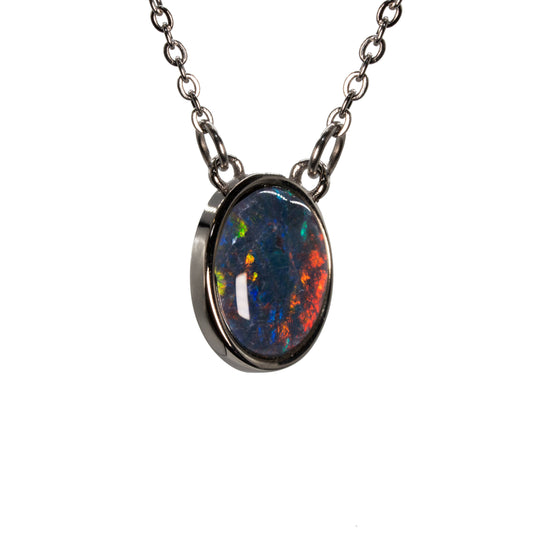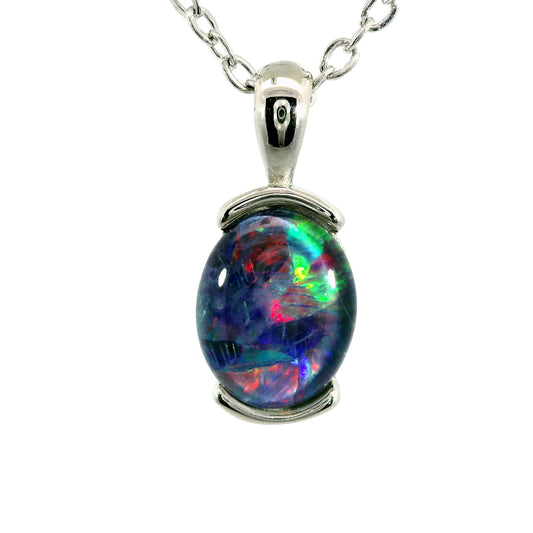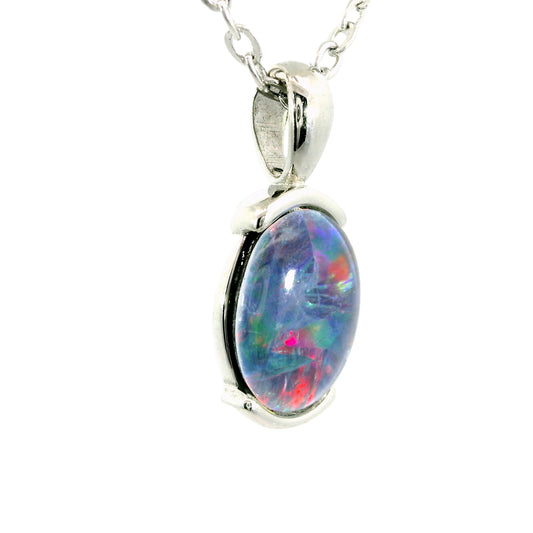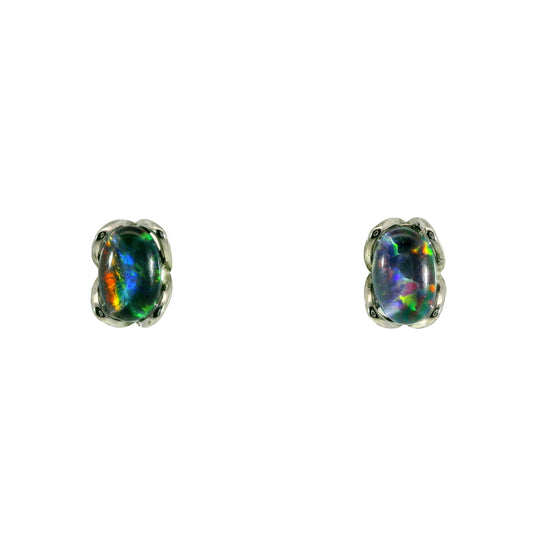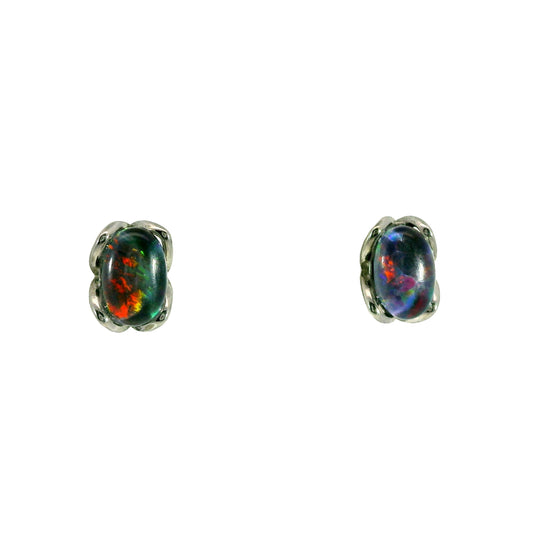Real or Fake? The Truth About Opal Authenticity
The world of opal jewellery is nothing short of magical. It’s easy to see why Australian opals have captivated hearts for centuries, their vibrant play-of-colour shimmers and shifts like a living rainbow, each stone telling its own ancient story. Watching a natural opal come to life in the light feels like uncovering a hidden treasure crafted by time itself. And thanks to today’s technology, it’s never been easier to buy opals online and discover the perfect gem for you. Almost too perfect, isn’t it?

In today’s fast-moving digital world, staying informed about opal trends and industry insights is more important than ever. With more stores selling opals online at significantly reduced prices, many customers are skipping vital steps like verifying authenticity, instead relying on blind trust. But as the number of synthetic opals and treated opals continues to rise, that trust is no longer enough.
The growing demand for natural Australian opals has unfortunately led to a surge in imitation stones. Synthetic versions are often marketed under vague names, blurring the line between genuine opal jewellery and lab-created alternatives. Some sellers use misleading terms or dishonest marketing strategies to push stones that have been heat - or chemically - treated, often without full disclosure.
This trend is especially troubling for reputable Australian opal jewellers, who pride themselves on transparency and quality. Misinformation around Australia’s National Gemstone, often fuelled by outdated myths and online scams, creates confusion and anxiety for buyers. For anyone looking to buy opals online, especially loose opals for sale or opal engagement rings, understanding what you’re purchasing has never been more critical.
"What are synthetic opals?"
"How can I tell if an opal is fake?"
"How can I identify a real opal?"
All of these questions overwhelm and frustrate those who only wish to own a 'rainbow gem' of their own.
What is a 'Fake Opal' Exactly?
 Fake opals, often referred to as synthetic opals, are created in laboratories to replicate the internal structure, colour play, and appearance of natural opals. While they cater to the growing demand for affordable, fast-fashion jewellery, they’ve also introduced confusion into the market. This rise in synthetic alternatives has led to widespread misinformation about pricing, leaving many buyers unsure about what they’re really paying for. As a result, a gap is forming between customers looking for genuine Australian opals and the trusted jewellers who supply them. The more the market leans into low-cost replicas, the harder it becomes for customers to feel confident when investing in authentic opal jewellery.
Fake opals, often referred to as synthetic opals, are created in laboratories to replicate the internal structure, colour play, and appearance of natural opals. While they cater to the growing demand for affordable, fast-fashion jewellery, they’ve also introduced confusion into the market. This rise in synthetic alternatives has led to widespread misinformation about pricing, leaving many buyers unsure about what they’re really paying for. As a result, a gap is forming between customers looking for genuine Australian opals and the trusted jewellers who supply them. The more the market leans into low-cost replicas, the harder it becomes for customers to feel confident when investing in authentic opal jewellery.
 Gilson opal originated in Switzerland and has been primarily produced in Japan since the 1970s. First developed in 1974, this lab-created opal is made from silica, mimicking the internal structure of natural opals. While technically a synthetic opal, Gilson opal is often marketed under names that blur the line between real and imitation. These stones frequently contain added minerals and compounds not found in genuine Australian opals, making them visually similar but chemically and structurally distinct. As a result, the term "Gilson opal" has become a common reference for high-quality imitation opals, often misleading for buyers seeking authentic opal jewellery.
Gilson opal originated in Switzerland and has been primarily produced in Japan since the 1970s. First developed in 1974, this lab-created opal is made from silica, mimicking the internal structure of natural opals. While technically a synthetic opal, Gilson opal is often marketed under names that blur the line between real and imitation. These stones frequently contain added minerals and compounds not found in genuine Australian opals, making them visually similar but chemically and structurally distinct. As a result, the term "Gilson opal" has become a common reference for high-quality imitation opals, often misleading for buyers seeking authentic opal jewellery.
Ethiopian Opal
Ethiopian opals, though often sold for their striking colour, typically begin as dull, brown stones, sometimes compared to the appearance of beer glass. To enhance their visual appeal, these opals often undergo chemical treatments designed to bring out their vibrant play-of-colour. However, this enhancement is not permanent, and unfortunately, the treatment is irreversible.
We’ve received many reports from customers who were unaware of these treatments when purchasing, only to later discover the truth, often tragically after damage had occurred. According to findings referenced by the World Bank, some of these issues stem from broader systemic challenges in Ethiopia’s gemstone industry. What makes the situation more concerning is the lack of transparency; many sellers fail to disclose that these stones are treated, resulting in buyer disappointment and a breakdown in trust. For anyone seeking natural opals or authentic opal jewellery, understanding the difference between treated and untreated stones is essential.
Are Triplets ‘Real Opal’?
Triplet opals do in fact contain a thin slice of real opal, typically sandwiched between a dark backing and a protective clear top, often made of quartz or glass. This layered construction is designed to enhance the stone’s appearance and durability while using only a minimal amount of natural opal. While triplets offer an affordable way to enjoy opal’s beauty, they are not the same as solid opals or even doublets, and must be clearly labelled as such.
Failing to properly identify a triplet opal can mislead buyers into thinking they are purchasing a solid, untreated stone, which can be especially problematic in the growing online jewellery market. Transparency is key: genuine opal jewellery must include clear and accurate descriptions, especially when layered or treated stones are involved. Misclassification not only confuses buyers but also undermines trust in the natural opal industry as a whole.
To tell the difference between a triplet opal and a solid opal, look closely at the side of the stone. Triplets usually have a visible layered structure: a dark backing, a thin slice of real opal in the middle, and a clear domed top (often glass or quartz). This top layer often gives the opal a glassy or overly shiny appearance. In contrast, solid opals are made from a single piece of natural opal, with no layers, and their colour play is visible throughout the stone, even from the sides. A jeweller’s loupe or magnifying glass can help reveal these details.
How to Identify Fake Opal
While debate and confusion often surround the world of opals, few stones have impacted buyers as strongly as Ethiopian opals. Their striking colours and affordability have attracted global attention, but they also raise a common concern: how can you tell if an opal is real?
 There are a few simple ways to distinguish a genuine opal from a fake opal or synthetic imitation. One of the most telling signs is a structure known as the columnar or "snake skin" pattern, commonly found in lab-created opals. To check for this, hold the stone on its side and look for vertical columns of repeating colour. Under magnification (around 60x), this artificial structure becomes even more obvious, the patterns appear unnaturally regular and uniform, unlike the organic variation found in natural opals.
There are a few simple ways to distinguish a genuine opal from a fake opal or synthetic imitation. One of the most telling signs is a structure known as the columnar or "snake skin" pattern, commonly found in lab-created opals. To check for this, hold the stone on its side and look for vertical columns of repeating colour. Under magnification (around 60x), this artificial structure becomes even more obvious, the patterns appear unnaturally regular and uniform, unlike the organic variation found in natural opals.
Another easy test is using a UV light. Most synthetic opals fluoresce a bright green under ultraviolet light, while real opals generally do not. Bringing a small UV torch when buying opals online or in person can help quickly flag treated or imitation stones.
That said, sometimes the best test is simply watching how the opal moves. A real opal displays a unique and unpredictable play-of-colour, flashes of red, orange, green, blue, and violet that dance as the stone shifts in the light. Fake opals, on the other hand, tend to have a flat, repetitive pattern that doesn’t change naturally with movement.
As the market becomes flooded with synthetic opals, dyed stones, and misleading labels (especially from unverified online sellers) it's more important than ever to be an informed and cautious buyer. Whether you’re captivated by the bold fire of a black opal, the delicate sparkle of a triplet, or navigating the complexities of Ethiopian opals, knowledge is your greatest tool. Although it may seem daunting at first, with a bit of education and a careful eye, you should be able to confidently explore the world of genuine Australian opal that is before you, choosing pieces that are not only beautiful but truly rare and valuable.
Opals are more than just gemstones, they’re ancient artworks with centuries of history woven into their moving colour. With the right guidance and a discerning eye, you can find an opal that’s as genuine and extraordinary as the story it tells.












































































































